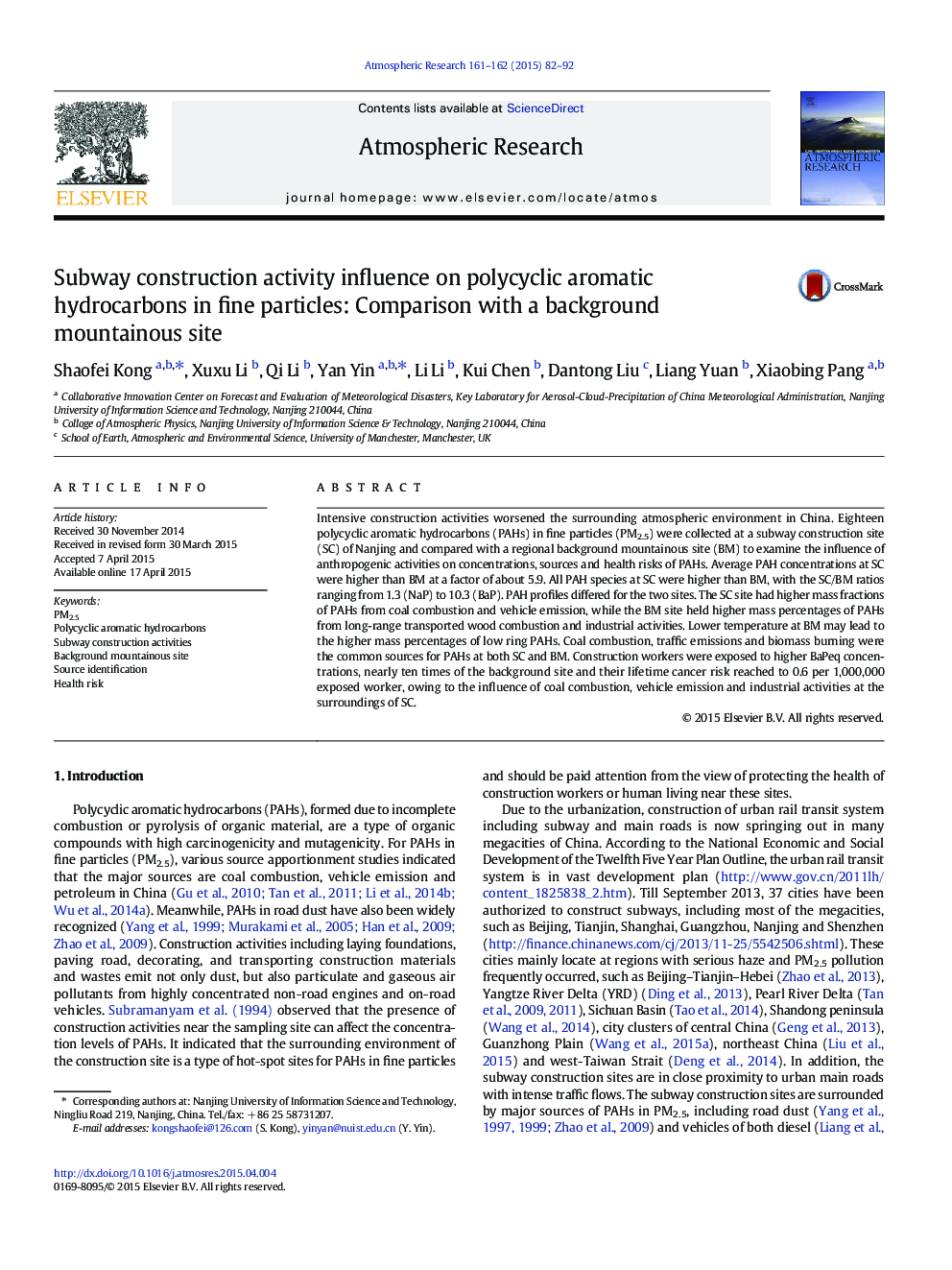| Article ID | Journal | Published Year | Pages | File Type |
|---|---|---|---|---|
| 4449666 | Atmospheric Research | 2015 | 11 Pages |
•PAHs in PM2.5 at a subway construction site were compared with a mountainous site.•PAH profiles were different for the two sites.•Emission sources and meteorological parameters influenced PAH ratios.•Joss paper burning was one of the sources for PAHs at the mountainous site.•Construction workers were exposed to higher BaPeq concentrations.
Intensive construction activities worsened the surrounding atmospheric environment in China. Eighteen polycyclic aromatic hydrocarbons (PAHs) in fine particles (PM2.5) were collected at a subway construction site (SC) of Nanjing and compared with a regional background mountainous site (BM) to examine the influence of anthropogenic activities on concentrations, sources and health risks of PAHs. Average PAH concentrations at SC were higher than BM at a factor of about 5.9. All PAH species at SC were higher than BM, with the SC/BM ratios ranging from 1.3 (NaP) to 10.3 (BaP). PAH profiles differed for the two sites. The SC site had higher mass fractions of PAHs from coal combustion and vehicle emission, while the BM site held higher mass percentages of PAHs from long-range transported wood combustion and industrial activities. Lower temperature at BM may lead to the higher mass percentages of low ring PAHs. Coal combustion, traffic emissions and biomass burning were the common sources for PAHs at both SC and BM. Construction workers were exposed to higher BaPeq concentrations, nearly ten times of the background site and their lifetime cancer risk reached to 0.6 per 1,000,000 exposed worker, owing to the influence of coal combustion, vehicle emission and industrial activities at the surroundings of SC.
